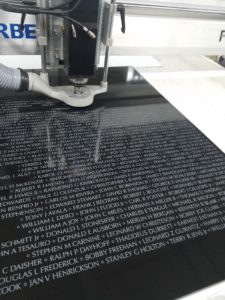 CNC routers and laser cutters are popular applications that produce precision parts and components for manufacturers. The difference between a CNC router and laser cutter can be a source of confusion, as each application performs similar functions. Each tool is managed by Computer Numerical Control (CNC) machines utilized in precision engineering. Both are employed in fabrication processes used in an array of manufacturing sectors. Each offers an increase in efficiency, performance, capability, and waste reduction in cutting parts.
CNC routers and laser cutters are popular applications that produce precision parts and components for manufacturers. The difference between a CNC router and laser cutter can be a source of confusion, as each application performs similar functions. Each tool is managed by Computer Numerical Control (CNC) machines utilized in precision engineering. Both are employed in fabrication processes used in an array of manufacturing sectors. Each offers an increase in efficiency, performance, capability, and waste reduction in cutting parts.
Both the CNC router and laser cutter machines perform programmed precision subtractive processes on stock material used in fabricating parts. The computer-controlled tools can automatically cut through workpieces on any number of axes as programmed. The designs are near limitless.
However, there are differences between CNC cutting and laser cutting. Each application offers its own unique features, benefits, and advantages to manufacturers. There are distinctions that factor into which process is best suited for an application. Let’s take a closer look.
CNC Routers
CNC routers are a contact-based cutting process similar in concept to handheld routers, with the obvious advantage of having the versatility and flexibility found in automated CNC cutting. A CNC router is adept in cutting or engraving materials with speed and precision. Like laser cutters, it can cut materials such as plastic, foam, wood, composites, acrylic, and is ideal for cutting steel, aluminum, and other metal plates to specifications.
Designs programmed into the CNC machine signals the router to cut or carve material with precision— the computer controls the exact velocity and positioning—back and forth or side-to-side on axes to specification. Speed, efficiency, and ease of use coalesce to increase productivity and enhance product quality in fabrication processes.
Subtractive precision cutting by CNC router processes creates much less material waste than other conventional cutting methods. Less waste means lower material costs. Combine that with the increased productivity and it adds up to time and money saved.
Laser Cutters
Like CNC routers, a CNC machine guides the laser cutter. The prime difference is in how the cutting is achieved. It is a non-contact, thermal-based process that employs a focused, high-powered laser beam that cuts custom shapes and designs from stock material. There is no custom-designed tooling required, either. Cutting relies on heat to perform precision cuts. Rather than carving, a high-energy beam burns through the material.
The fabrication process is suitable for a number of materials such as metal, glass, plastic foam, gemstones, wood and paper or corrugation. One laser cutting machine can perform multiple processes.
Because laser cutting utilizes CNC machining, it can repeatedly and consistently produce more complex designs and shapes than regular drills, and more intricate parts to high tolerances with exceptionally smooth finishes. In fact, the high-quality cuts produce such smooth-edged finishes that it does not require further cleaning, treating, or finishing.
Lasers can cut through the toughest metals and hardest gemstones with efficiency. But they are ideally suited for rapid prototyping with an exceptional level of detail. It is an extremely fast way to cut designs using wood or various plastic materials. As an example, prototypes can be cut out in a few minutes. Different versions can be produced almost as quickly as they can be tested.
CNC cutting and laser cutting are two highly efficient and versatile methods used in the fabrication of precision parts and components for manufacturing. Though there are distinct differences between the two services, the processes complement each other.
